Making Pupusas – Suchitoto
In my ongoing pursuit of trying as many of the typical dishes as possible of whatever country I am in, after some emails to uncover how I might go about doing it, this morning I did a gastronomy tour with Sapito Tours in Suchitoto. It was brilliant!
In this post I’m going to focus on just one part of it where I had the opportunity to make pupusas – the most common dish in El Salvador.
Met Luis at the “Centro de Amigos del Turistas” (“Friends of the Tourists” office) – a wonderful and incredibly helpful tourist information initiative in various part of El Salvador – where I was helped by one of my dancing buddies from the “Los Panchos” concert to organise my horseriding tour for tomorrow. Luis had already talked with a couple of women in the Municipal Market about hosting a visitor and showing me the processes of how they prepare their food so we headed there first. Given my spanish is very good, he explained that his role was really just to make the introductions/connections and leave us to chat. The real stars are the women who actually do the work.
The first person we visited was Carmen, who owned a pupusería – a place that makes and sells pupusas. She was almost done for the morning (Salvadoreños only eat pupusas for breakfast and dinner) and was taking last orders when we arrived. In between filling these last orders, she showed me how to make pupusas and guided me in making my own.
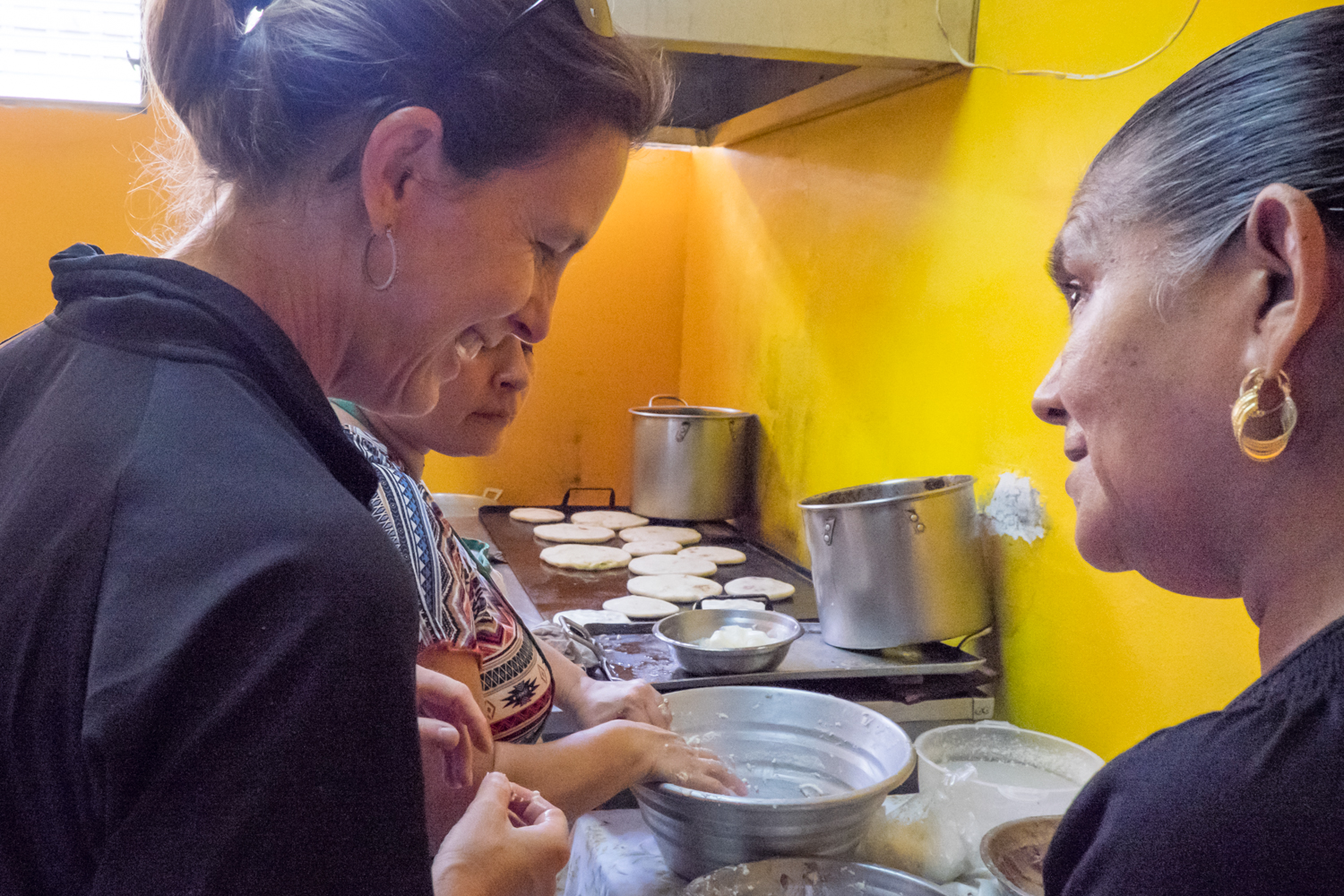
Carmen sells the 4 most common types of vegetable-based pupusa – cheese, beans (frijoles) + cheese, squash and cheese, loroco (a type of white flower) and cheese. She was out of loroco, so I made each of the other 3.
The process really starts with the preparation of the “masa” or dough, which can be either corn or rice based. We visited the molinero (the miller) after we visited Carmen, and it was quite a setup! 4 different mills used for different purposes – one mill for grinding dry raw ingredients (e.g. rice), one mill for coffee (keeping strong flavours separate), one mill to make the corn masa (for pupusas or tortillas) or for milling the frijoles (beans), and one mill for crushing the tomatoes that go into the salsa that typically accompanies the pupusas.
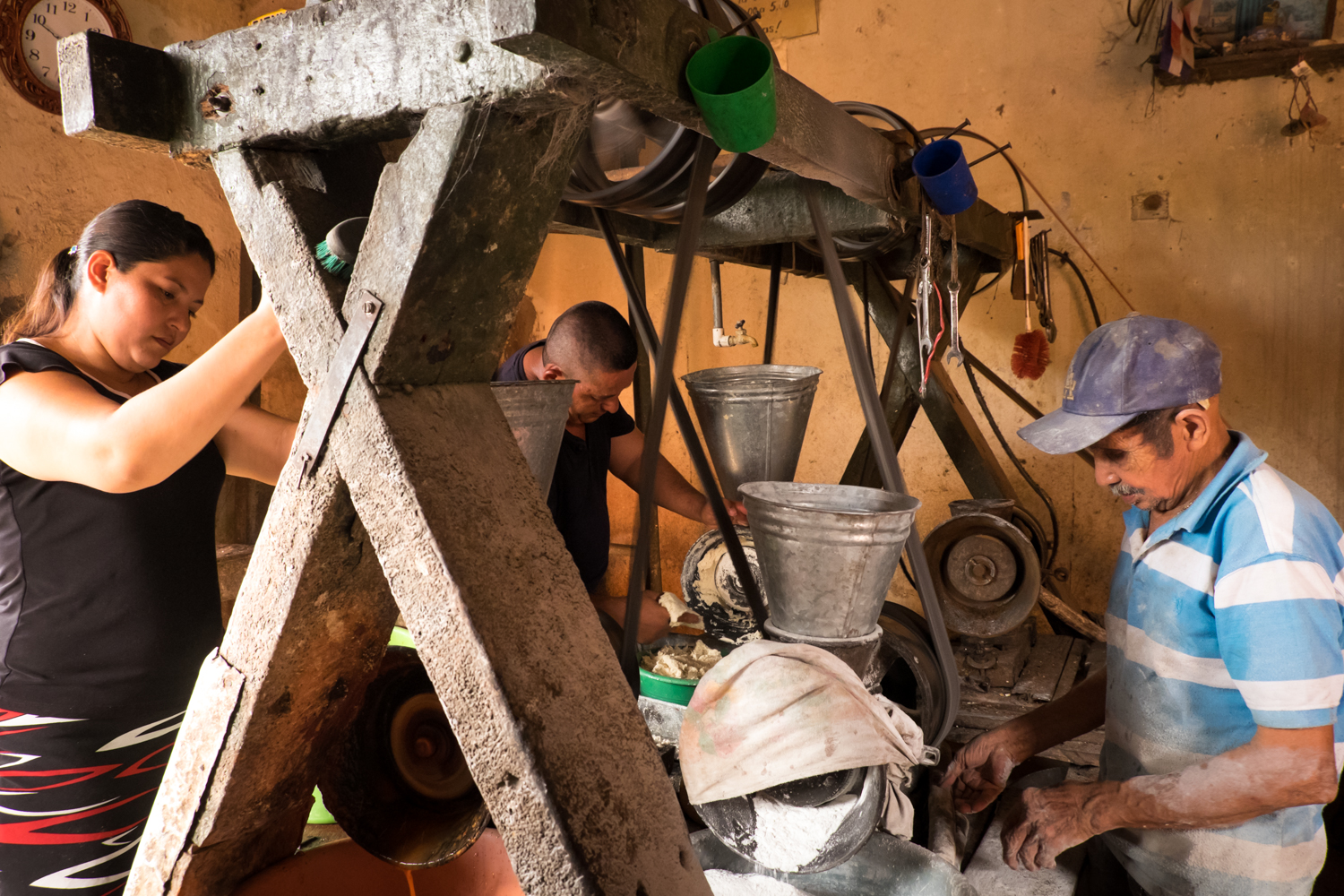
Antonito has been milling for 36 years and he’s had this wild contraption of 4 mills since the beginning. When it is running, the belt drives fly around in a massive amount of movement and noise – couldn’t help but recall that episode of “Life on Mars” where the worker gets killed by a similar belt driven machine…
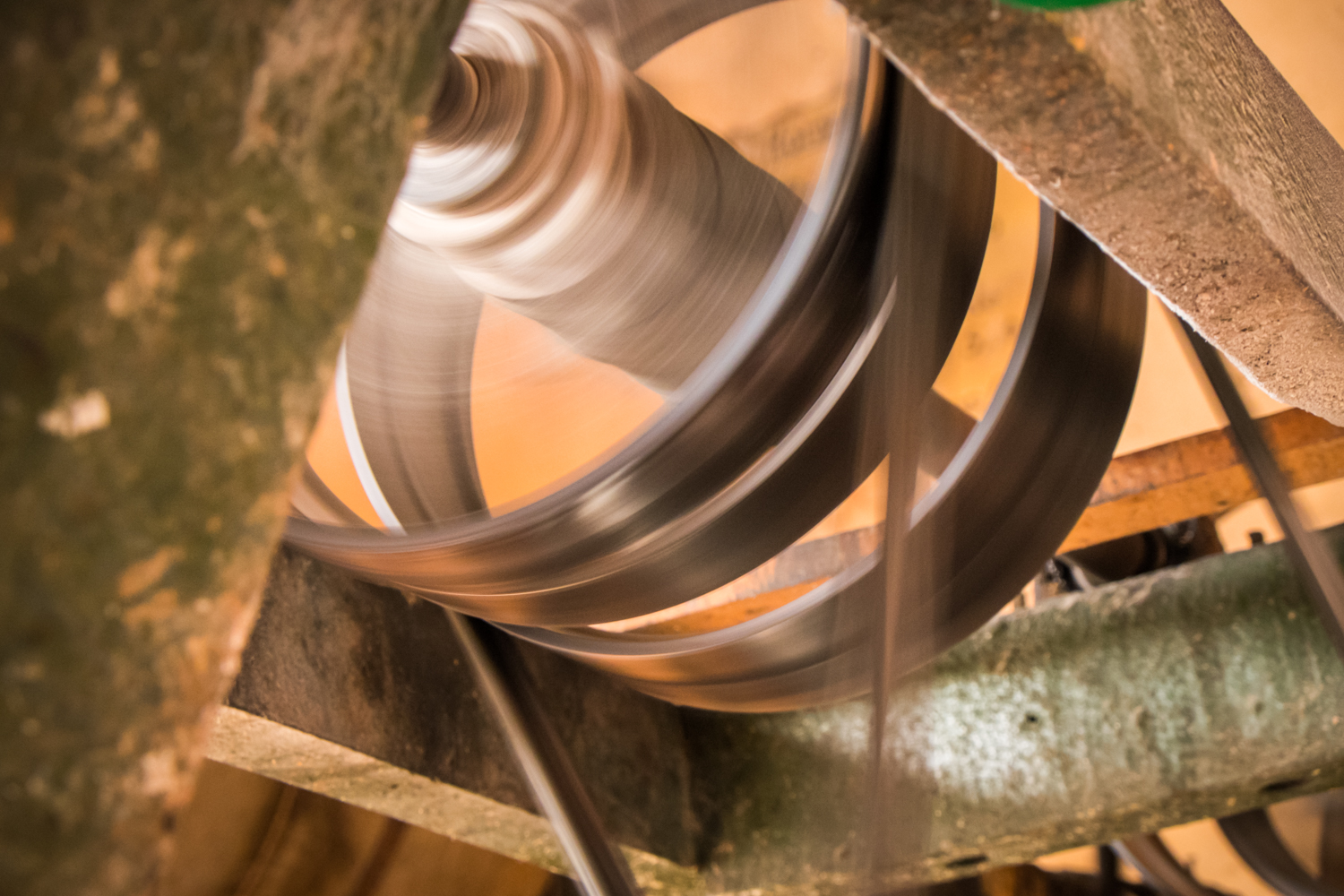
Back with Carmen, she fries the milled frijoles and combines them with a little cheese, and grates the squash with a little onion and salt to make the fillings. All this is prepared in advance of the first customer arriving, and is laid out with the specific pupusa cheese and the masa.

To make the pupusa itself, you take a small ball of the masa and pat it out into a round shape
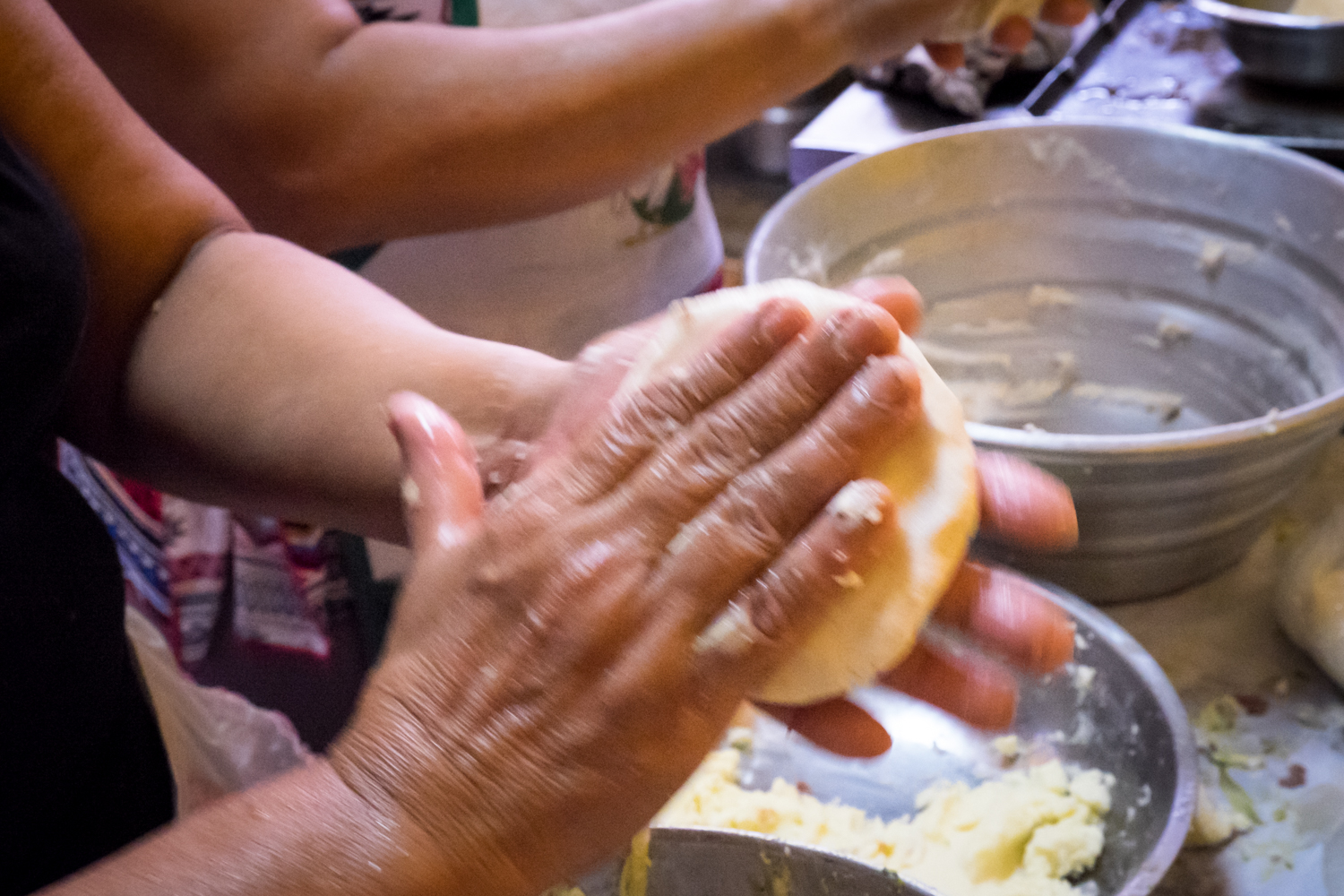
Then add your desired filling (in this case frijoles) and the pupusa cheese
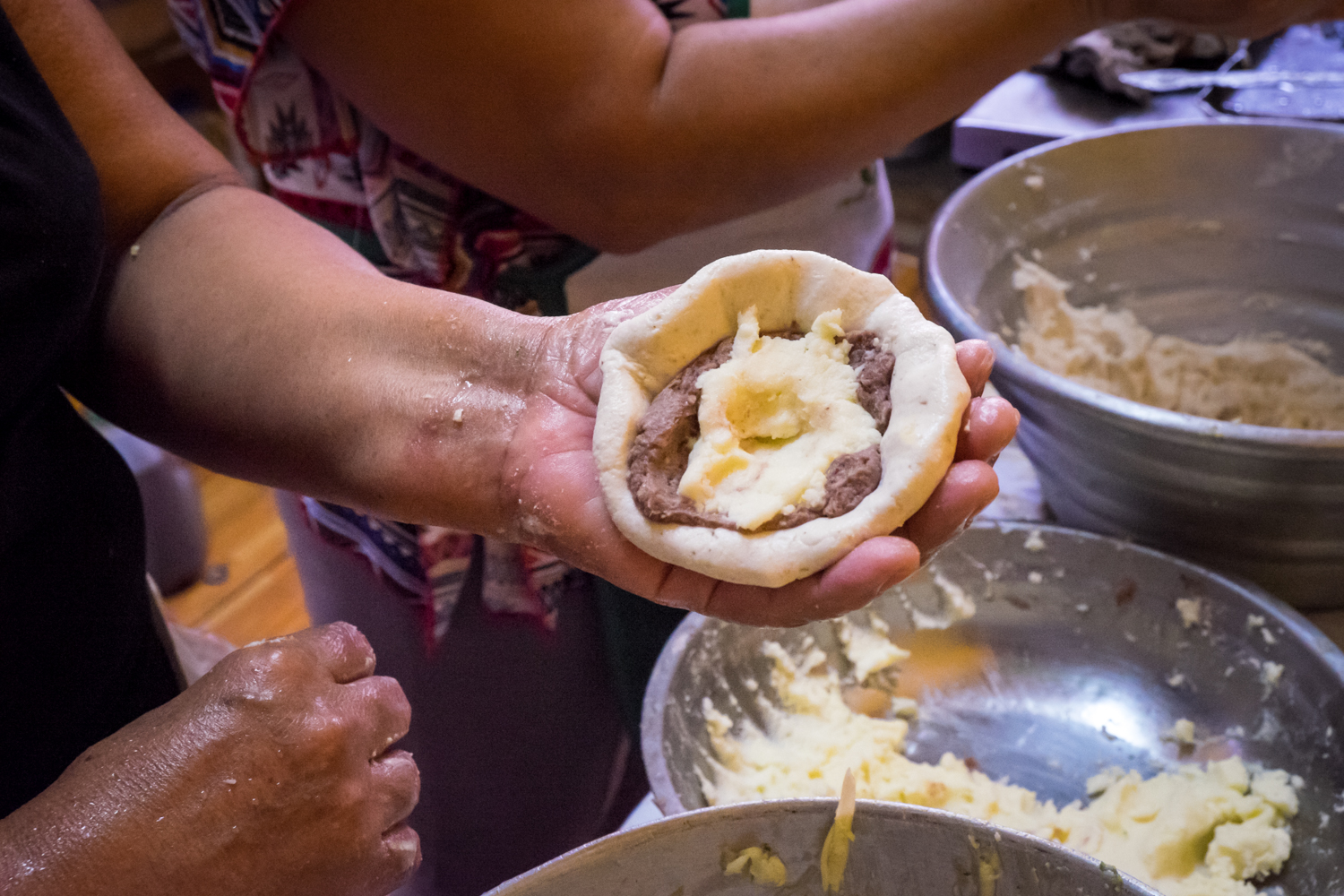
Then you have to close the masa around the filling by curving up the edges and, once closed, you pat out again into a thick, round shape.
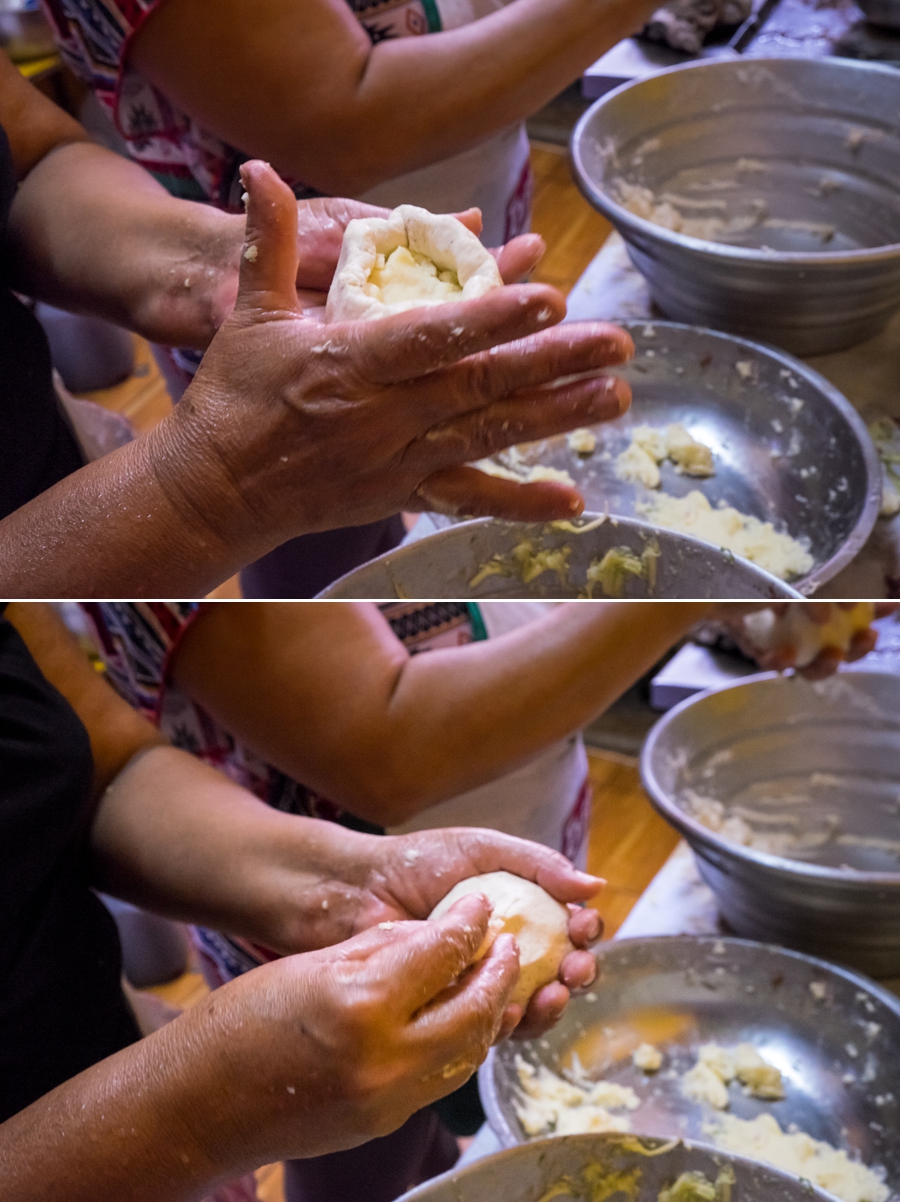
This is then coated with a little fat and placed on the hot stovetop to cook.
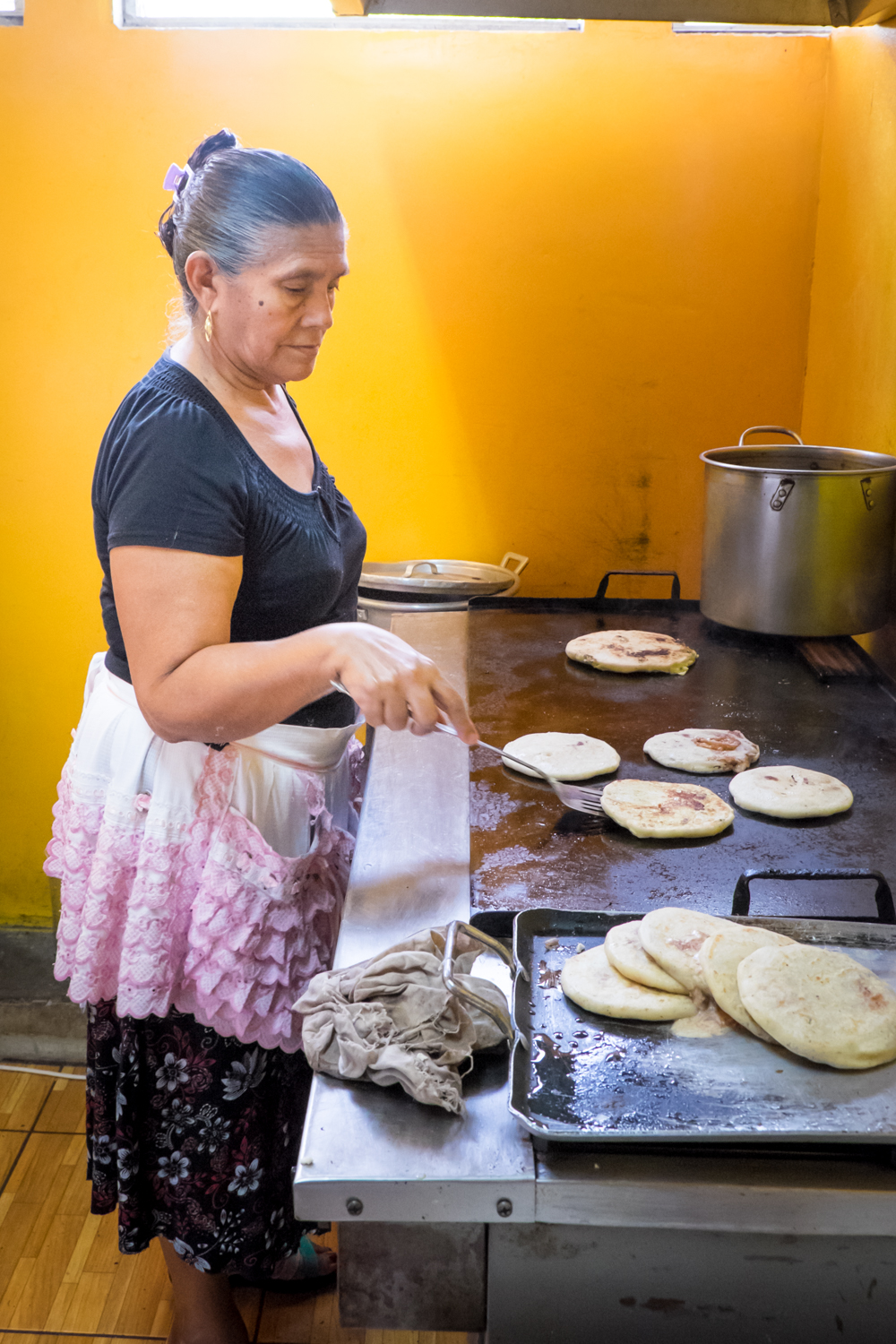
Takes about 3-4 minutes, they are piping hot when they are done (you know it because you eat them with your fingers – the Salvadoreños have asbestos fingers), and incredibly tasty! These were the ones I made – didn’t do too badly – even if I say so myself!
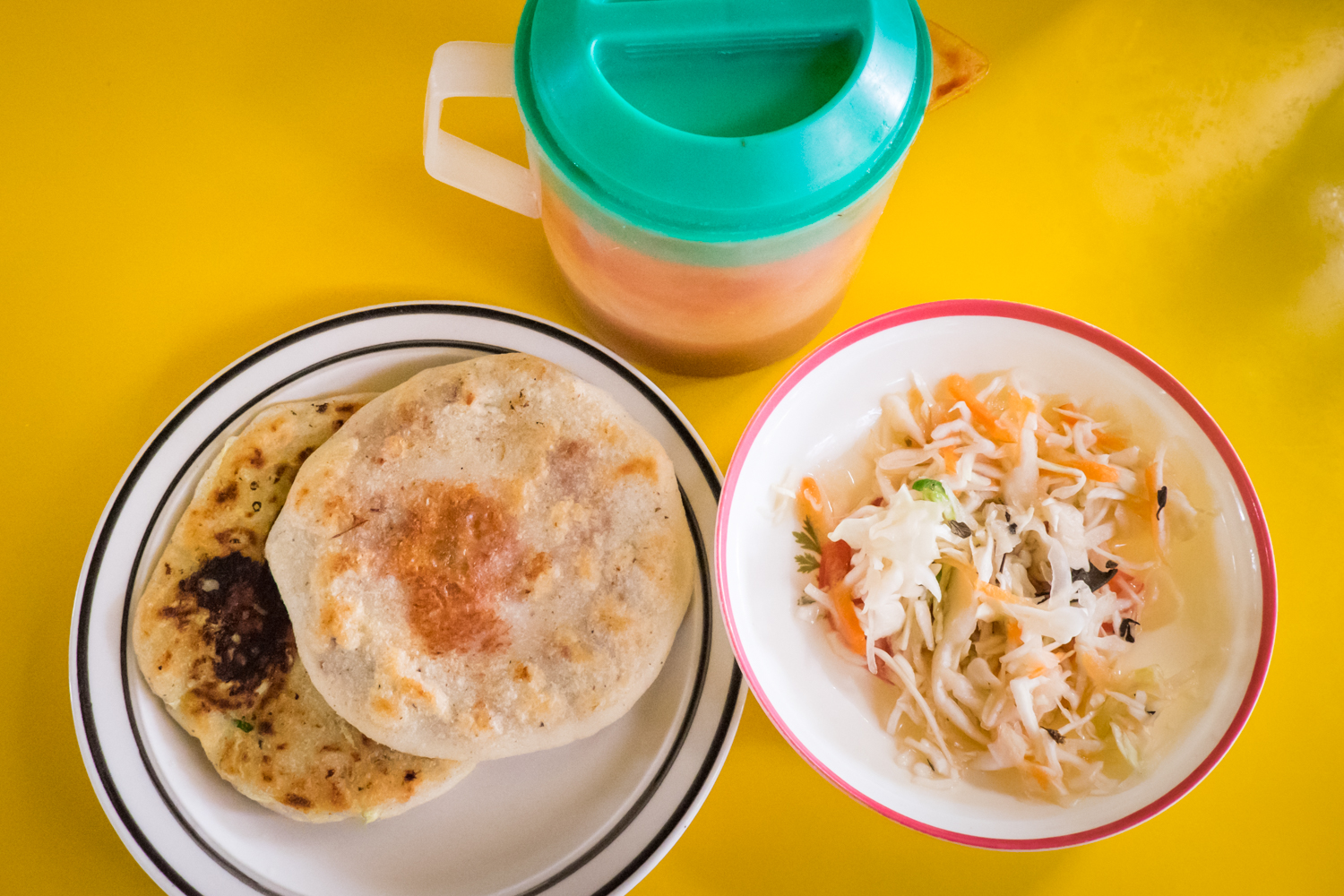
They are typically served with the tomato salsa (which is actually quite runny) and curtido – basically cabbage, carrot, onion and jalapeño chile that is finely grated, washed in hot water and stored in vinegar. Incredibly tasty and incredibly cheap (for the most common ones – about 75 cents each). It’s no wonder they are so popular here in El Salvador! Pruebelo!
